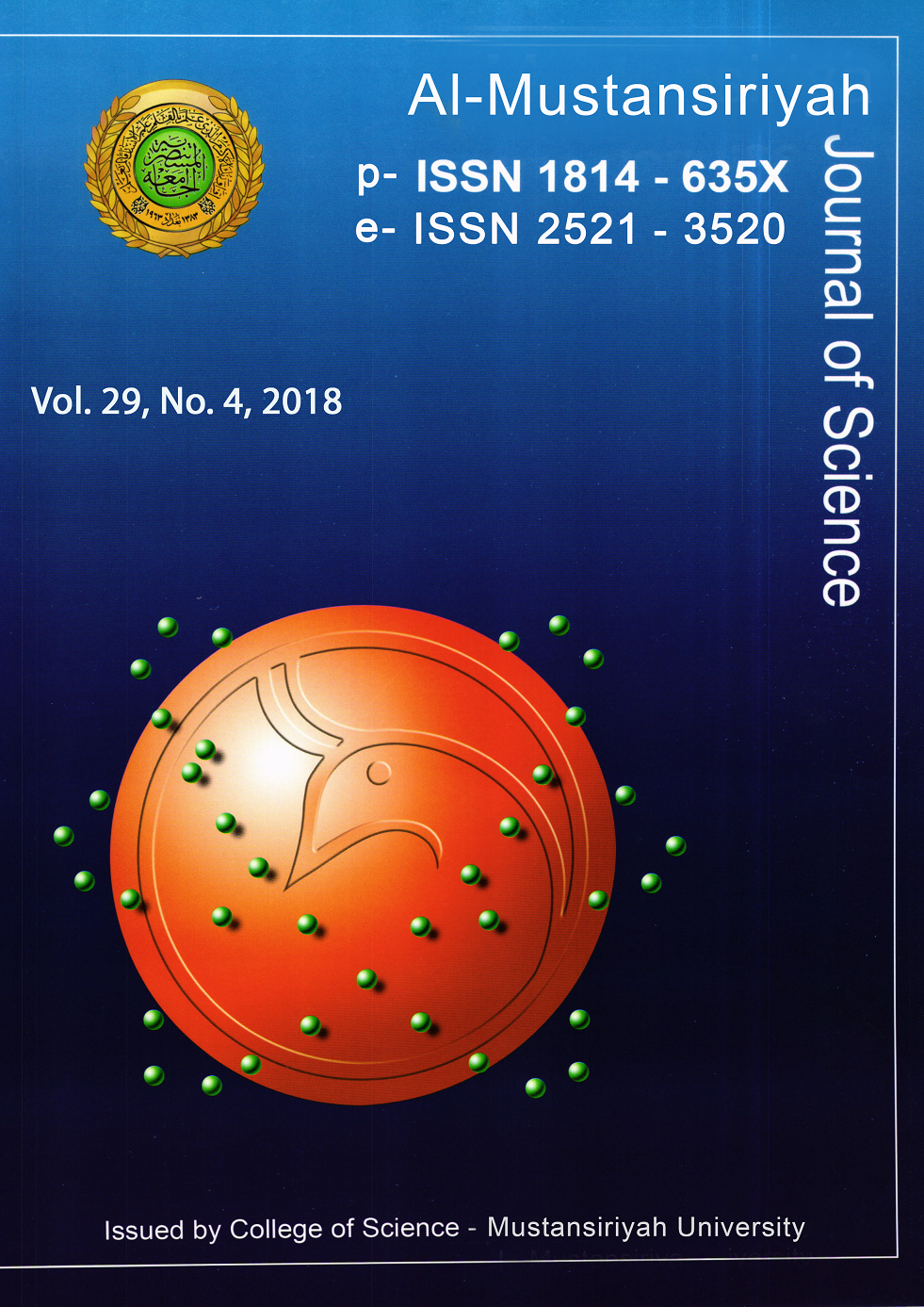Effect of laser fluence on structural transformations and photoluminescence quenching of Zinc Selenide nanoparticles thin films
DOI:
https://doi.org/10.23851/mjs.v29i4.441Abstract
Abstract We reported in this work the growth of ZnSe nanoparticles thin films deposited on glass substrates were synthesized by a pulsed laser deposition (PLD) method. The as obtained films were characterized by X-ray diffraction (XRD), Scanning electron microscopy (SEM), Transmission electron microscopy (TEM), UV-VIS Spectrophotometer, and Photoluminescence (PL) spectra. X-ray diffraction study confirmed the transformation the cubic phase of ZnSe nanoparticles into hexagonal phase by increase the laser fluence from (4.77-5.97) J/cm2. The particle size variations were achieved by varying the laser fluence of prepared films. XRD studies and TEM images confirmed the nanometer size was found to lie in the range of 12-80 nm. A UV-VIS study was carried out to measure the band gap of the ZnSe nanoparicles thin films and it showed a blue shift with respect to the bulk value. The PL spectra at room temperature (300K) of the films showed the decrease of maximum values at at 522 nm( 2.379), 521 nm (2.3838) and 520 nm (2.3882 eV) for the laser fluence (4.77, 5.57 and 5.97 J/cm2), respectively. We assigned the variation due a larger number of non-radiative recombination centers appears in the films.Downloads
References
References:
C.S.S.R. Kumar, Semiconductor Nanomaterials, Wiely-VCH, Newyork (2010).
J. Che, X. Yao, H. Jian, and M. Wang, “Application and preparation of ZnSe nanometer powder by reduction process,” Ceramics International, vol. 30, no. 7, pp. 1935–1938, 2004.
D. Sarigiannis, J. D. Peck, G. Kioseoglou, A. Petrou, and T. J. Mountziaris, “Characterization of vapor-phase-grown ZnSe nanoparticles,” Applied Physics Letters, vol. 80, no. 21, pp. 4024–4026, 2002.
K. V. Anikin, N. N. Melnik, A. V. Simakin, G. A. Shafeev, V. V. Voronov, and A. G. Vitukhnovsky, “Formation of ZnSe and CdS quantum dots via laser ablation in liquids,” Chemical Physics Letters, vol. 366, no. 3-4, pp. 357–360, 2002.
D.H. Loundes. D.B. Geohegan, A.A. Puretzky, D.P. Norton, C.M. Rouleau. Science 273 (1996) 898.
P. Rudolph, N. Sch¨afer, and T. Fukuda, “Crystal growth of ZnSe from the melt,” Materials Science and Engineering R, vol. 15, no. 3, pp. 85–133, 1995.
Y. P. Leung, W. C. H. Choy, I. Markov, G. K. H. Pang, H. C. Ong, and T. I. Yuk, “Synthesis of wurtzite ZnSe nanorings by thermal evaporation,” Applied Physics Letters, vol. 88, no. 18, Article ID 183110, 2006.
C. X. Shan, Z. Liu, X. T. Zhang, C. C. Wong, and S. K. Hark, “Wurtzite ZnSe nanowires: growth, photoluminescence, and single-wire Raman properties,” Nanotechnology, vol. 17, no. 22, article 006, pp. 5561–5564, 2006.
L. Jin, W. C. H. Choy, Y. P. Leung, T. I. Yuk, H. C. Ong, and J.-B.Wang, “Synthesis and analysis of abnormal wurtzite ZnSe nanowheels,” Journal of Applied Physics, vol. 102, no. 4, Article ID 044302, 2007.
Tarey RD, Raju TA (1985) A method for the deposition of transparent conducting thin films of tin oxide. Thin Solid Films 128:181–189.
Tauc J, Grigorovici R, Vancu A (1966) Optical properties and electronic
structure of amorphous germanium. Phys Stat Solidi 15:627
Downloads
Key Dates
Published
Issue
Section
License
(Starting May 5, 2024) Authors retain copyright and grant the journal right of first publication with the work simultaneously licensed under a Creative Commons Attribution (CC-BY) 4.0 License that allows others to share the work with an acknowledgement of the work’s authorship and initial publication in this journal.






















